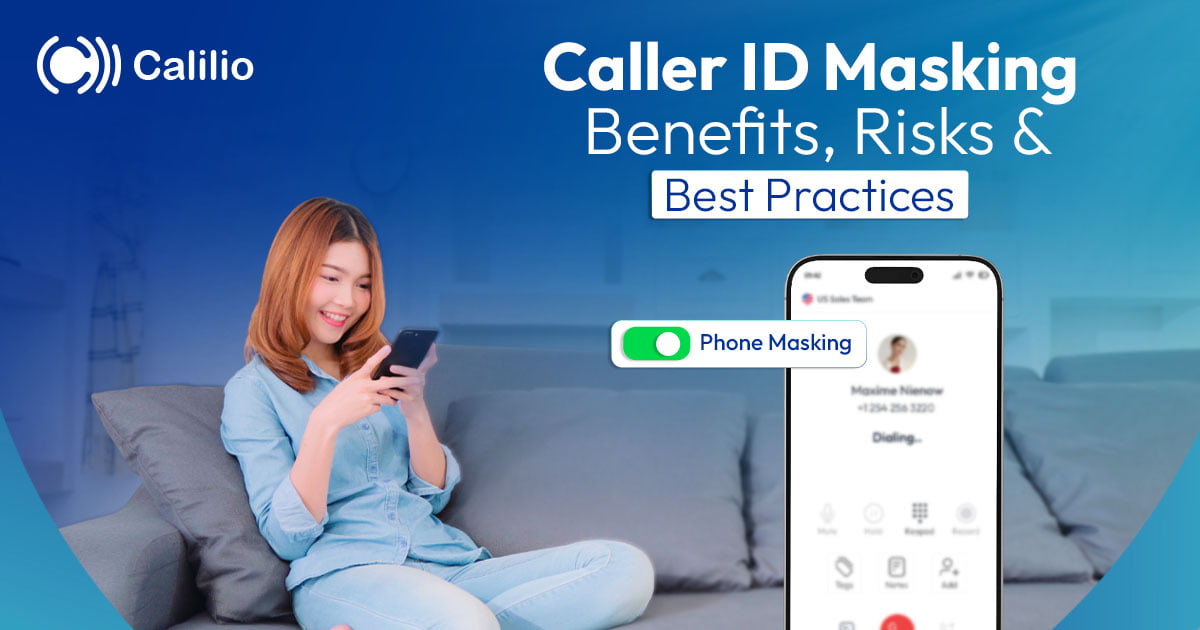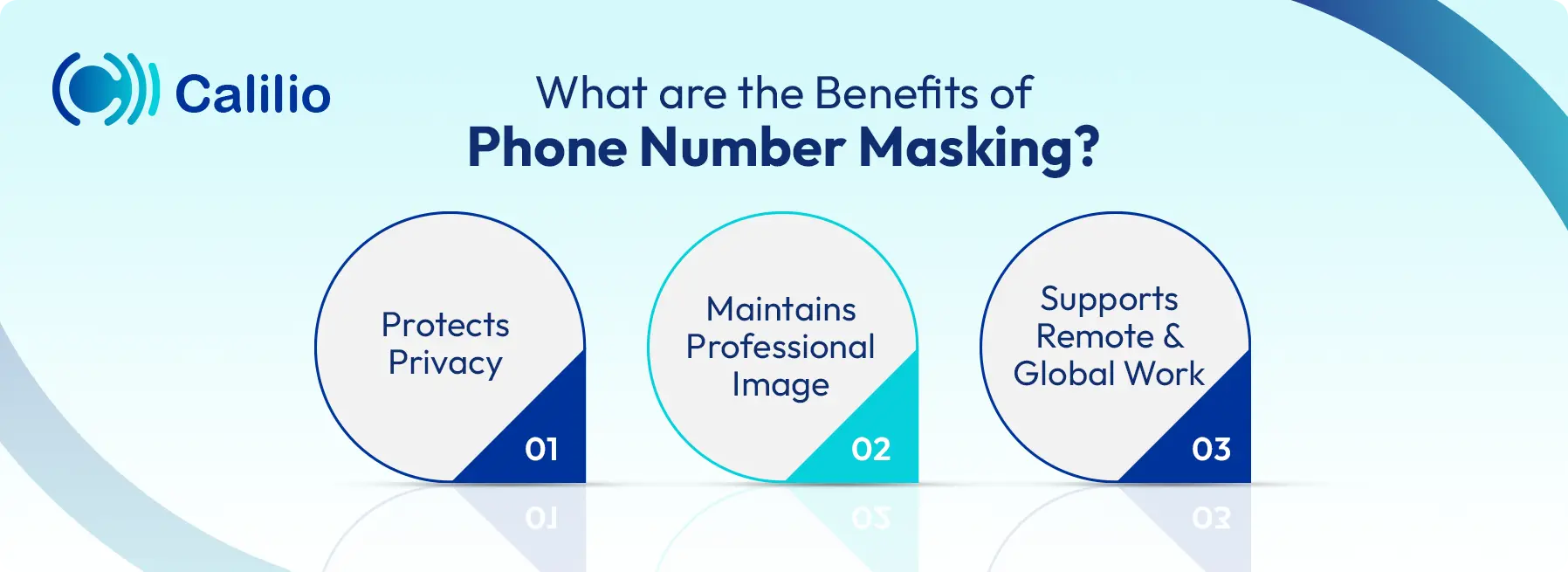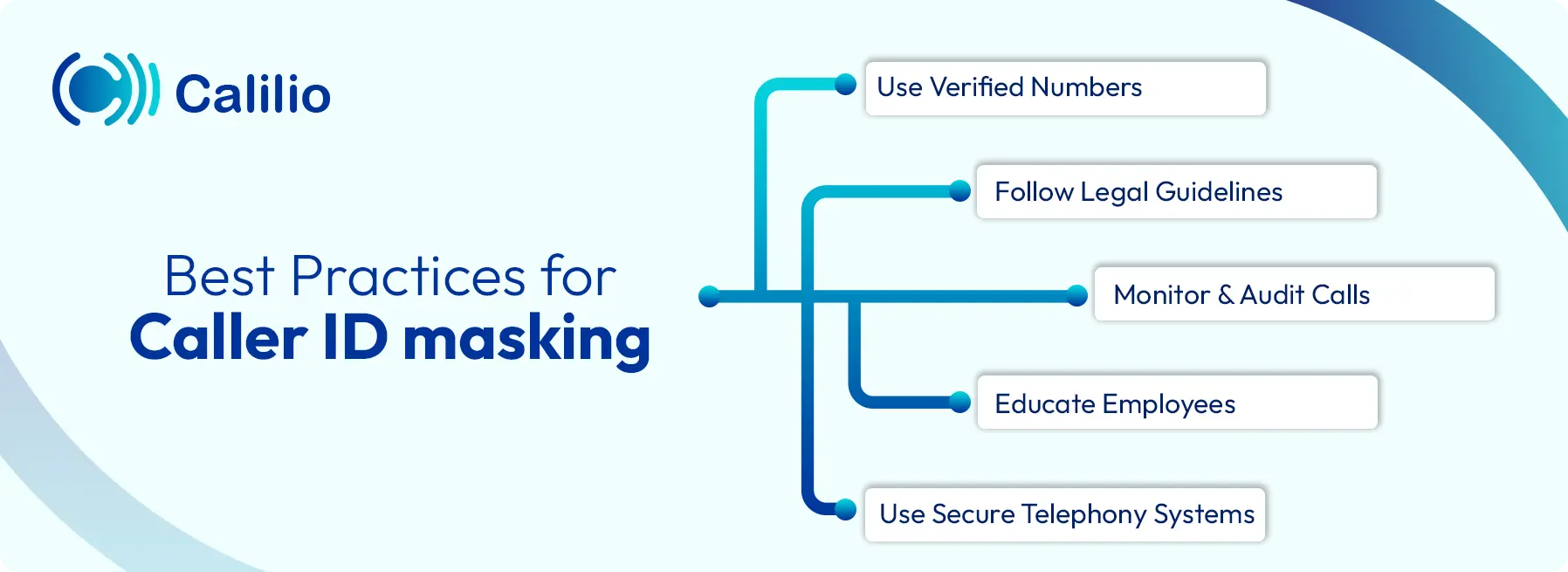What is Caller ID Masking? Benefits, Risks, and Best Practices

Worried about exposing your personal phone number during business calls? You’re not alone. With spam, scams, and privacy risks on the rise, sharing your real number can feel unsafe—and even unprofessional.
Caller ID masking provides a simple solution. By displaying a different number instead of your own, you safeguard your privacy, maintain a professional image, and stay in control of every conversation.
In this guide, we’ll break down what caller ID masking is, explore its benefits and risks, and share best practices to use it safely and effectively.
What is Caller ID Masking?
Caller ID masking, also called phone number masking, is a telephony feature that shows a different phone number on a recipient’s caller ID instead of your real number.
Call masking works through cloud telephony or VoIP systems. When you make a call, these systems route it through a virtual number, which appears on the recipient’s caller ID instead of your personal or business number.
How Does Call Masking Protect Your Number?
Call masking protects your number by hiding your real phone line and replacing it with a virtual or temporary one. When you make a call, the other person only sees the masked number, not your personal or business line.
The call is routed through a secure VoIP or cloud telephony system, which substitutes your original caller ID with a virtual number before reaching the recipient.
This process ensures that:
- Your actual number is never transmitted across the network.
- The recipient only sees the masked number, maintaining your privacy.
- Your phone line is shielded from spam, scams, or tracking attempts.
This not only protects your identity and reputation but also improves data security for personal and business communication.
What are the Benefits of Phone Number Masking?
Phone number masking protects privacy by hiding personal numbers and maintains a professional image by allowing you to use a single business phone number for calls.

1. Protects Privacy
Masking the caller ID adds an extra layer of security by preventing exposure of personal or business phone numbers. It protects you against spam calls and unwanted contact. As such, it reduces the risk of scams, fraud, or misuse of your sensitive contact details.
Additionally, most caller ID masking services follow data privacy laws like GDPR, TCPA, and CCPA. This ensures both the caller’s and the recipient’s information stays secure and protected during the calls.
2. Maintains Professional Image
Call masking helps in maintaining a professional image by showing one official business number instead of personal numbers. You can show your business number even when you’re calling from your personal number to contact the clients. This makes every call look consistent and branded, helping build credibility and trust.
3. Supports Remote & Global Work
The ability to change the Caller ID makes it easy for remote teams or international staff to appear as though they are calling from the company’s local business line. Customers see familiar local or toll-free numbers, which increases trust and makes communication seamless. This is especially valuable for businesses serving clients across different regions or time zones.
Start Masking Your Calls Today with Calilio—Protect Your Number and Stay Professional
Security Risks of Caller ID masking
While caller ID masking offers many benefits, it’s important to be aware of potential risks. This includes fraud and scam risks (such as phishing or identity theft), regulatory violations if not used properly, data leaks from misconfigured systems, and a lack of traceability, which makes it harder to track fraudulent or abusive calls.
- Fraud and Scam Risks: Cybercriminals can misuse call masking for identity theft or phishing attacks. By making a masked number appear as a trusted source, they can trick people into sharing sensitive information.
- Regulatory Violations: If call masking is used without proper registration or verification, it may break laws like the Telephone Consumer Protection Act (TCPA) in the U.S. or the GDPR in Europe. This can result in heavy penalties and legal issues.
- Data Leaks: Poorly configured call masking systems may accidentally reveal real phone numbers. This puts personal and business data at risk of being exposed.
- Lack of Traceability: Masked calls can make it harder to trace fraudulent or abusive activity. This reduces accountability and complicates investigations for law enforcement.
Best Practices for Caller ID masking
When masking caller ID, always use verified numbers and follow legal guidelines to stay compliant. It’s equally important to monitor and audit calls, educate employees on proper usage, and choose secure telephony systems to prevent misuse.

1. Use Verified Numbers
When masking caller ID, it’s essential to use only verified and authorized phone numbers. This not only builds trust with call recipients but also reduces the likelihood of your numbers being flagged as spam or blocked. It helps maintain your brand’s credibility and ensures compliance with telecom regulations.
2. Follow Legal Guidelines
Stay updated with local rules to avoid legal issues. By following the legal regulations, companies can avoid hefty fines, legal disputes, and potential bans on their communication activities. More importantly, compliance shows customers that your business values transparency and data protection, which strengthens your brand reputation and builds long-term trust.
3. Monitor and Audit Calls
Regular monitoring and auditing are essential to ensure caller ID masking is used responsibly. It helps detect any misuse, track performance, and maintain transparency within your team. By reviewing call logs, recordings, and agent behaviour, you can quickly identify issues, implement corrective actions, and uphold the integrity of your caller ID masking practices.
4. Educate Employees
Employees play a key role in using caller ID masking effectively. Without proper training, they may accidentally reveal personal numbers, misuse the feature, or even violate compliance rules. That’s why businesses should create clear policies and provide regular training sessions on how and when to use call masking.
5. Use Secure Telephony Systems
A secure phone system ensures that real numbers are never revealed during call routing, even in the case of technical failures. It also minimizes the chances of data breaches, unauthorized access, or spoofing attempts. Moreover, advanced platforms allow admins to set strict controls on who can use masking, reducing the risk of internal misuse.
Conclusion
Call masking is a smart and reliable way to protect your privacy while maintaining smooth communication. Whether you’re using it for personal safety, customer service, or business operations, this feature ensures your real number stays hidden while conversations stay secure.
If you’re looking for a smart call masking tool, upgrade to Calilio’s business phone system. It offers an advanced Call Masking feature backed by a full suite of call management features. Plus, you can monitor and manage masked calls in real-time and easily adjust masking settings.
No Tricks, Just Treats
Use Code CALILIOWEEN25 & Get A Spooktacular 10% Off Your Calilio Subscription. Start Your Savings Now!
Wicked Savings Of 10% Off With Code CALILIOWEEN25
Frightfully Affordable Virtual Numbers From - Just $2/month
The Most Hauntingly Affordable VoIP for Businesses
Powered by AI magic That’ll Cast A Spell On Your Calls


Frequently Asked Questions
Why do businesses use caller ID masking?
Businesses use caller ID masking to protect employee privacy, build customer trust, maintain a professional image, and ensure secure communication without exposing personal numbers.
Is it legal to use caller ID masking?
How does caller ID masking differ from call blocking?

Still have questions?
Can’t find the answer you’re looking for? Please chat with our friendly team.
Stay in the loop
Get the latest call insights, trends, and updates delivered straight to your inbox.
By subscribing, you agree to receive updates from Calilio.
You can unsubscribe anytime.
